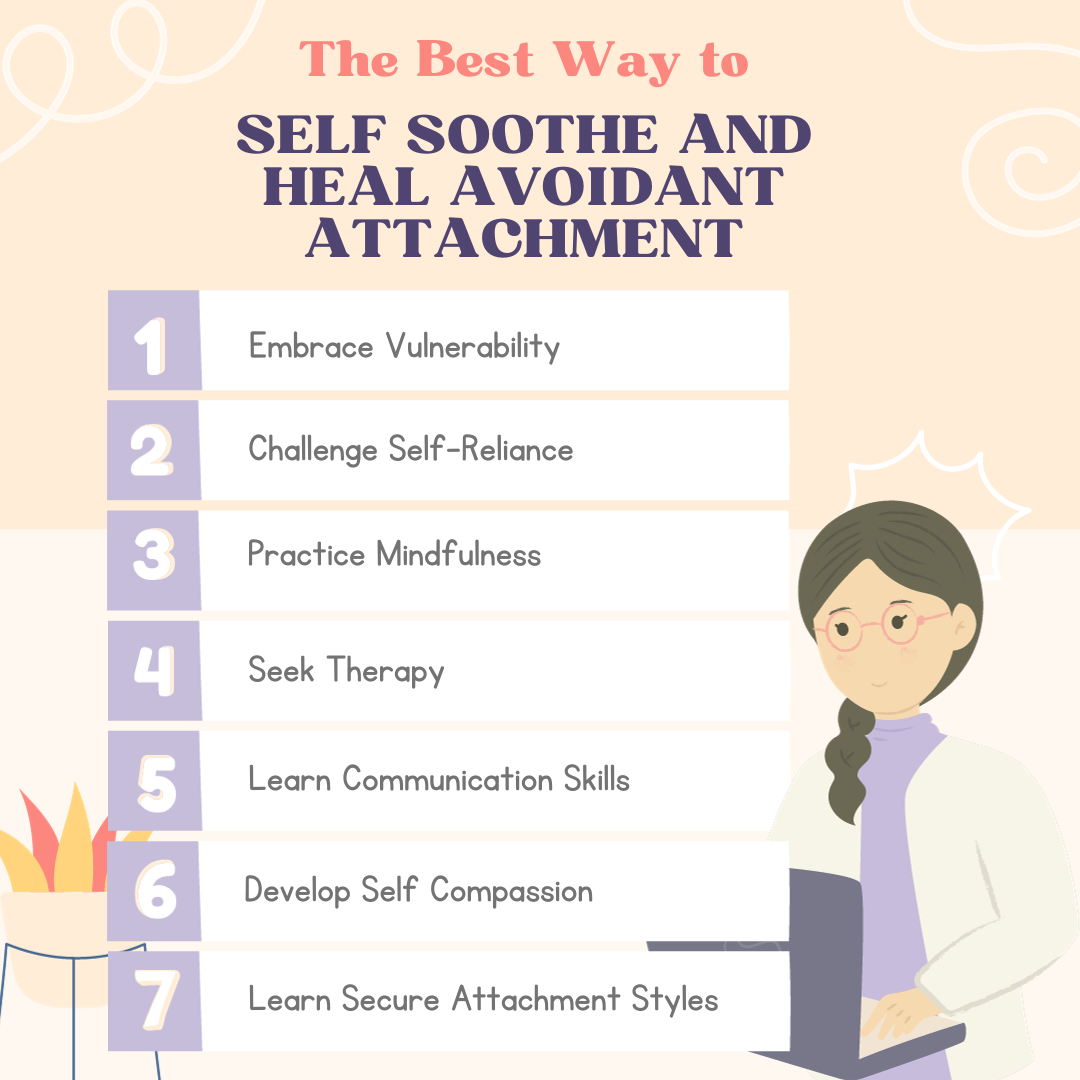Understanding Avoidant Attachment
Human beings are innately social creatures. We thrive on connection and relationships, and these connections are deeply ingrained in our biology. Attachment theory, initially developed by psychologist Mary Ainsworth, offers valuable insights into how our early relationships with caregivers shape our adult attachment styles. These attachment styles can significantly impact our ability to form and maintain healthy relationships.
One of these attachment styles is known as avoidant attachment. People with an avoidant attachment style tend to be uncomfortable with emotional intimacy and often create emotional distance in their relationships. This article will explore the key characteristics of avoidant attachment and offer guidance on how to self-soothe and heal this attachment style to build more secure and fulfilling connections.
Understanding Avoidant Attachment
Avoidant attachment, as one of the four main attachment styles, is deeply rooted in early childhood experiences. To comprehend how to overcome it, it’s essential to grasp the key concepts of attachment theory:
1. Biological Hardwiring: Infants are biologically wired to seek proximity and connection with their caregivers for survival. These early relationships lay the foundation for our attachment styles in adulthood.
2. Roadmap for Relationships: The quality of care received during childhood influences our beliefs about relationships and the world. A secure attachment style forms when a child feels safe and loved, while an insecure attachment style, such as avoidant attachment, develops when a child learns to self-rely and minimize emotional expression.
3. Behavior and Communication: Attachment styles evolve as children learn which behaviors and communication styles are most effective in eliciting responses from their caregivers. These patterns often persist into adulthood and shape our interactions with romantic partners.
4. Healing and Growth: Regardless of your early attachment experiences, it is possible to cultivate a more secure attachment style and foster healthier relationships through self-awareness and intentional effort.
Self-Soothing and Healing Avoidant Attachment
Overcoming an avoidant attachment style involves recognizing and addressing patterns of emotional distancing and self-reliance in relationships. Here are some strategies to help you self-soothe and heal avoidant attachment:
1. Embrace Vulnerability: To break free from the habit of emotional distancing, practice vulnerability. Share your thoughts, feelings, and fears with your partner or trusted friends.

Gradually, this will help you become more comfortable with emotional intimacy.
2. Challenge Self-Reliance: Avoidant individuals often rely heavily on self-sufficiency. Experiment with leaning on others for support, both emotionally and practically. This can be challenging but is essential for building trust in relationships.
3. Practice Mindfulness: Mindfulness techniques can help you become more aware of your avoidance patterns. When you notice yourself pulling away or minimizing emotions, take a moment to pause, breathe, and consider whether this response is serving your well-being.
4. Seek Therapy: Professional therapy can be a valuable resource for addressing avoidant attachment. A skilled therapist can provide insights, guidance, and support tailored to your specific needs.
5. Communication Skills: Develop effective communication skills to express your feelings and needs clearly. Learning to communicate openly can bridge emotional gaps in your relationships.
6. Self-Compassion: Be kind to yourself. Healing attachment styles takes time and effort, and setbacks may occur. Embrace self-compassion and remind yourself that growth is a process.
7. Secure Attachment Models: Surround yourself with individuals who exhibit secure attachment styles. These individuals can serve as positive role models and help you learn healthier ways of relating to others.
In summary, healing an avoidant attachment style is a transformative journey that involves embracing vulnerability, challenging self-reliance, and seeking support through therapy and healthy relationships. By understanding and addressing the root causes of avoidant attachment, you can cultivate more secure and fulfilling connections with others. Remember that change is possible, and with dedication and self-awareness, you can build healthier, happier relationships.
By: Jennifer Seip, LMFT

Be Well Therapy Group
